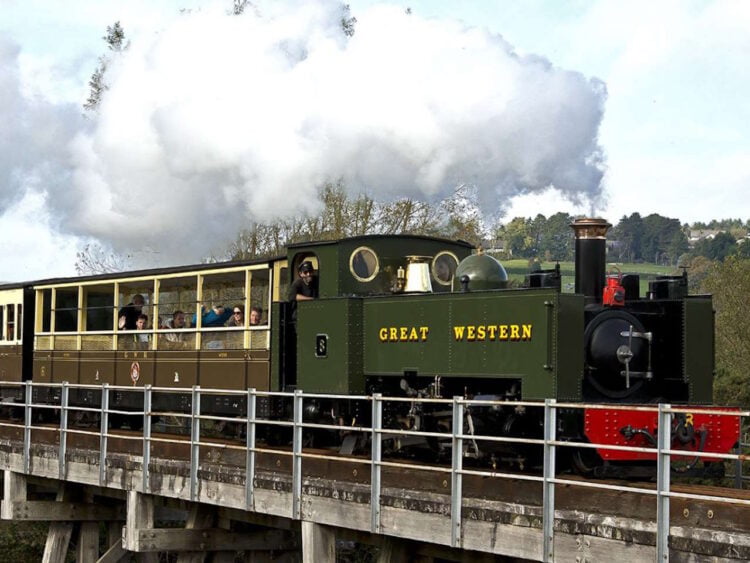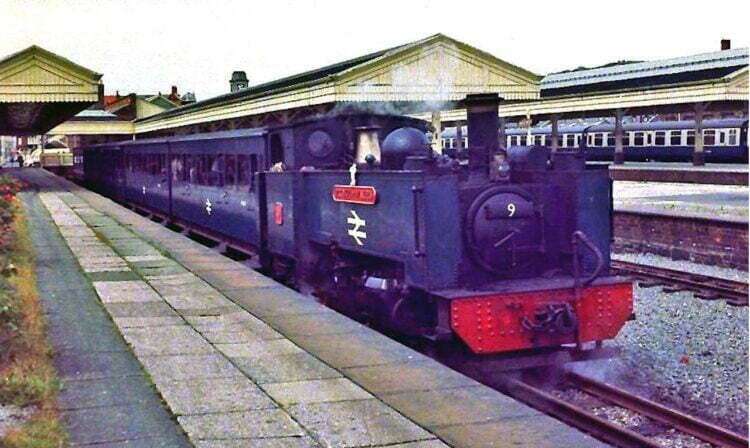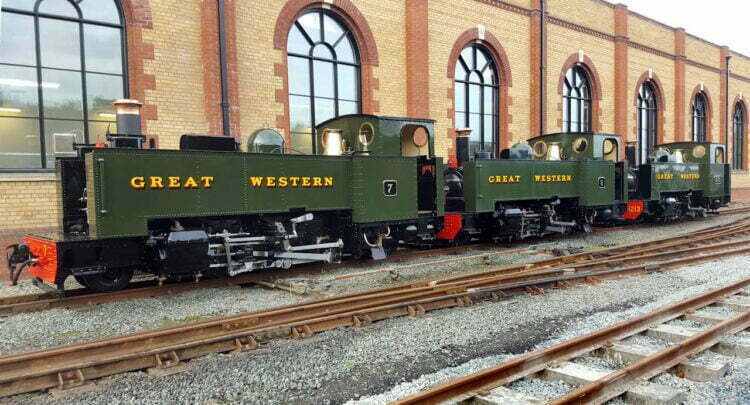The Vale of Rheidol Railway (VoR) has repainted its iconic 2-6-2 steam locomotive No 8 LLYWELYN from Great Western Railway green livery into nostalgic British Railways black with a “lion over wheel” emblem on its side tanks.
LLYWELYN was built at Swindon Works by the Great Western Railway (GWR) in 1923 specifically for use on the Vale of Rheidol Railway in Wales and was given the number 8.
It is one of three similar locomotives built around the same time, the others being No.7 OWAIN GLYNDŴR and No.9 PRINCE OF WALES.

The Vale of Rheidol Railway was absorbed by the Cambrian Railways, which in turn became part of the Great Western Railway in the 1923 Grouping. It has the distinction of being the last steam-operated railway line operated by British Railways, which put it up for sale in 1988 and was acquired by the Brecon Mountain Railway. For several years both lines operated under a common management, but in 1996 it was decided that it should operate as a separate entity.

In 1979 LLYWELYN became the line’s second locomotive to be to oil burning in 1979, but in 2012 it was converted back to coal burning. Now that LLYWELYN is in black livery, it will provide an authentic look when it is paired with a set of the railways carmine and cream coaches. During the 1970s, Llywellyn was repainted into the then-ubiquitous British Railways blue livery complete with the double arrow symbol on the side tanks.

LLYWELYN will be in operation hauling trains departing from Aberystwyth at 10.30 and 14.00 today, Tuesday, 31 October, and tomorrow, Wednesday, 1 November, and again next Saturday, 4 and Sunday, 5 November, which is also the railway’s last operating day for this year. Anyone visiting today or tomorrow will also be able to visit the – GWR engine shed.






Responses
**Buzz** “Locomotives 7,8 and 9 when first built”. No. 9 wasn’t No.9 until BR days. It was numbered 1213 and it’s genesis is one of the most engaging stories from the grouping era. I’m surprised no-one ever queried how fast Swindon designed and turned out Nos.7 and 8, this being an early-ish result of the Cambrian Railways becoming amalgamated with the GW on 1st Jan 1922, exactly a full year before the generally quoted date.
I’m REALLY glad the current VoR management haven’t been too obsessively wedded to historic accuracy to put some padding on the 3rd class seats. As built, the top stretcher dug into the spine in a most unpleasant manner. They’re SO much more confy these days.